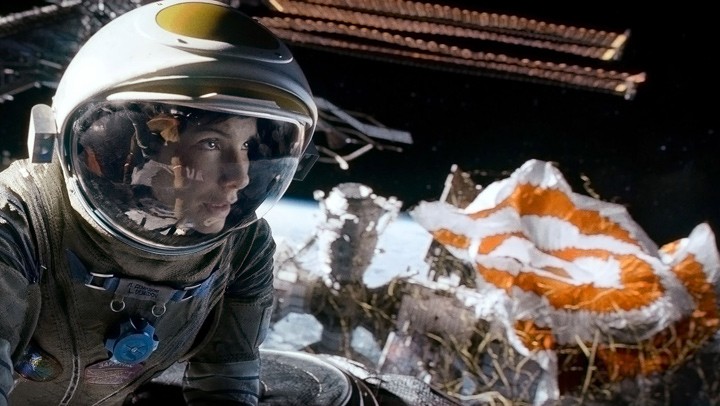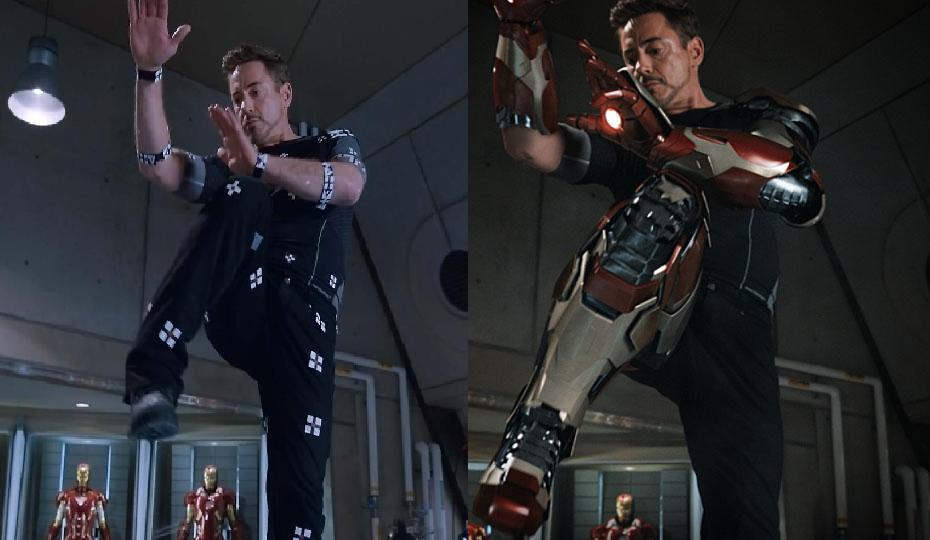After studying engineering at Nottingham University, Richard Graham began his career in film whilst running on the set of a horror flick. From there he edited corporate films, before foraying into the world of visual effects. He joined Framestore in 2008 as a VFX line producer before taking on the role of VFX producer on a range of feature films.
His repertoire of work includes: Clash of the Titans (2010), Prince of Persia: The Sands of Time (2010), Iron Man 3 (2013) and of course the Academy Award winning Gravity (2013). Currently just having finished work on Tom Cruise starrer Edge of Tomorrow set for a 6 June release worldwide; Richard was in India for a seminar and AnimationXpress.com’s Sidharth Iyer caught up with him and spoke at length on the making of Gravity, how VFX happened, his perspective on the industry and a lot more.
Excerpts:-
How was working on Gravity different from the other projects you have handled?
It was definitely the biggest project I have worked on, and the longest three years of my life. We had to be very innovative and be very good with the budget as well though we wanted to showcase the outer space and Earth like never before; the film was made very efficiently, in just about $100 – $110 million. For a film of that size and scope it was a very reasonable cost, it wasn’t super expensive though it was very long and required a loads of technically skilled people on the project.
Generally, on movies requiring VFX, a lot of pre-visualisation is done where animatics is used to create the action sequences; but with Gravity it was a different ball game altogether. For this feature we created a complete film which was animated from shot one right up to the end of the film. This was required for the very nature of the film, as most of the sequences required a high degree of slow motion and long duration shots (the longest shot in the film is nearly 13 minutes).
We even took care of the minor details, as to the lighting and the reflections showing on the headgear of the astronauts. In all we spent nearly 10 months to create the animated version of Gravity and Alfonso Cuarón was right there, looking at each frame with intricate detailing and ensuring even the slightest of moments that he wanted to capture in space was not missed out on.
And it all worked out well, as the actors – Sandra Bullock and George Clooney – only had to replicate the way the animated characters moved and once they dubbed their respective dialogues, all we had to do was put the animation to their dialogues. So, in this way we managed to complete the shoot in just about six months and the next 18 months to complete the space odyssey.
So how did a civil engineer by education stumble into the world of VFX by profession?
As a visual effects producer (actually a project manager) my job is to manage the schedule, the budget and the logistics of any film; managing 200 to 300 people at one time and making things work smoothly. So it all came to me naturally (chuckles), I studied all of this in my degree and trust me managing a visual production for a project is very much like erecting a building, follows almost the same algorithm.
And how I got into VFX… well I was just starting out after finishing my degree course, I had no knowledge of what was happening in the VFX industry (I guess, no one really did then) but then it caught some momentum and grew in London between 2002 to2003, in particular with the Harry Potter films running for 10 years through London… I just met the visual effects producer and he offered me a job and I took the job and eight years down the line here I am… It’s just luck and I am very interested in VFX, I like playing with new technologies and I like the process of making movies just at the touch of a button.
What are your views on Superstar Rajnikanth’s new film ‘Kochadaiiyaan’?
Yes I have seen the rushes, they have used a different technology called ‘motion capture’ similar to the kind of technology used in movies like The Adventures of Tintin and Avatar in the recent past. It’s a very interesting technique where in the film, the actors are actually role-playing the characters that they are playing and the actions and movements are captured in real-time and all the information is used to recreate the film to create a visual spectacle.
Motion capture requires a slightly different technique but we use very similar skill sets which are used for visual effects in general; there are two ways of getting animation into a character – first is the motion capture with dot tracking, where all the bones are moving in the body and the second technique is the traditional animation, which is literally using frame by frame capture of movements and several frames when put together at a time creating the pose of the character and playing that back.
How has the VFX industry evolved since you first stepped foot in this space?
I think based on my experiences of the films on which I have worked, there are a lot more frames that are generated digitally nowadays from the time when I started out. Even in case of Gravity (which is an exception) we started with digital images and added photography to it, it’s generally the other way round; so with the demand for bigger and far more advanced visual effects, the audience that saw the film two years ago doesn’t want to see the same thing again. So the challenge that VFX producer like myself face currently is to up the ante on every project that we take up and push the boundaries of our creativity and imagination.
And, you won’t believe it but I have sat next to people who had done Astro Physics, who had done Vets, Engineering backgrounds, students of Fine Arts; so it’s a very interesting profession. Sometimes I wonder what if Leonardo di Vinci was around today, he would have loved this profession, because it’s a mix of science and arts and it’s at that inflection point where arts meets technology and I don’t know of any other profession that is quite so intense and insane and actually quite rewarding as well (smiles).
Does it usually take long for a film having a lot of visual effects?
Nope Gravity was unusual, because we had to do so much of animation before we even shot a single frame and the work afterwards because of the numerous CG frames took quite a long time to get it right. Actually just to explain it more aptly even while we were working on the final stages of Gravity, we were thrown the challenge of giving the VFX for Iron Man 3 and believe it or not I actually managed to squeeze in Iron Man 3 between the time I finished work on Gravity.
For Iron Man 3 we had a team of 70 people, who executed about 110 shots for the film. But Framestore was only one of the companies working on the VFX, because if you see the credits for the VFX of the film there are about 300 artists who have worked on it and we did the project in just about six months.
Why do production houses go to two to three VFX studios for work on one film?
Usually in a film nowadays, a lot of VFX is required – maybe a talking character and a building blowing up and some companies are known for doing one thing better than the other; thus the production house too feels that the work should be given to the company that is most appropriate for that particular sequence.
At Framestore, we are proud of being known for some of the best character animations, and with films like The Golden Compass (2007) and the Narnia trilogy to our credit, I believe our work speaks for itself.
Earlier animation complimented photography and now with Gravity it’s vice versa, so where do you think the Animation and VFX industry is heading?
I think on bigger budget films the demand is for creating more and more of the picture because the limits of what can be done are expanding; as long as you are doing something good enough for some time you can achieve anything that you want is what I believe. Directors and writers are coming to us with ideas that no one has seen before and we always see demand for the work we have been doing, it’s going to get more and more complex always.
The tools being used nowadays are mostly created in-house but we also use a lot of tools like Adobe and Autodesk, which are getting progressively better as well, we have worked to get quicker but at the same time the work is getting more and more complex as well.
Would you say Stanley Kubrick would have done a better job with ‘2001: A Space Odyssey’ (1968) with advanced technology at his disposal now?
I think with the technology that is available now it would have been a completely different film but within the constraints of what he could achieve in 1967 through 1968 is incredible. I saw a 70 mm print recently and it still holds up till today, so it’s actually a testimony to the limits that are imposed on them by time and technology it had forced them to be extremely creative.
Even, the Star Trek movie where the last scene took months and months for a single frame exposure to make its incredible work possible, and the fact that they could do all that at that time and yet they managed to make it look so amazing is actually the most fascinating thing. Would they have done it differently if they had the technology before? I guess yes they would have!
But isn’t that a question of aesthetics again, it’s like clicking a picture on the manual mode and clicking a picture in auto?
In everything we do – even nowadays – it may appear as we are using computers and everything is directed, even the things like the cables – in Gravity – where the actors are entangled is directed, it all doesn’t happen by chance. I think even Kubrick made the film with the mindset of making a Gravity. Every choice is made specifically and with a creative thought.
Finally, what quality do you look for in a prospective employee?
The things which we look for are problem solving techniques and good sense of creative aesthetics. Someone who should be flexible and with a smart mind; who should be reasonably straight forward and apply the tools to the best of his creative abilities and the vision of the director. Anyone with such skills will be an asset to any organisation, in any field.





